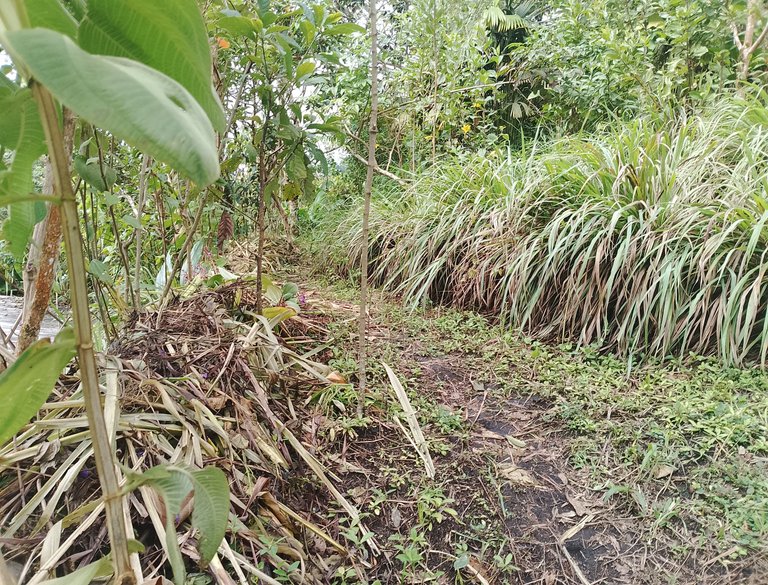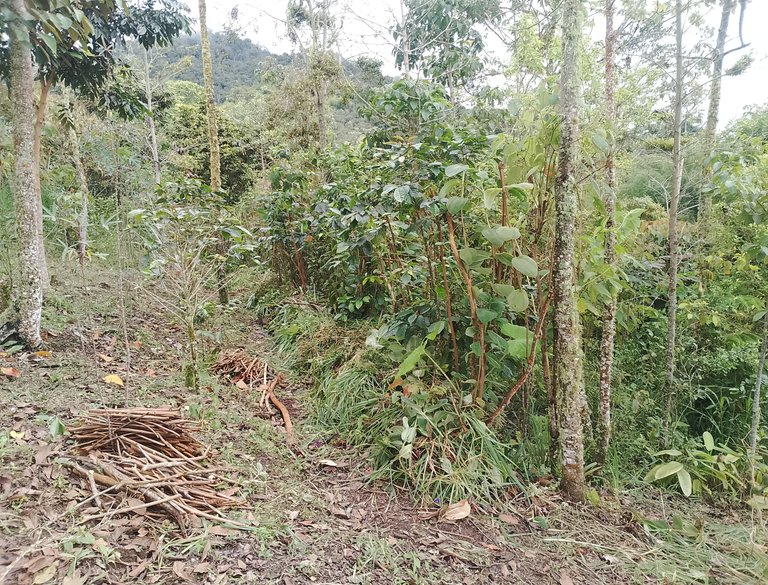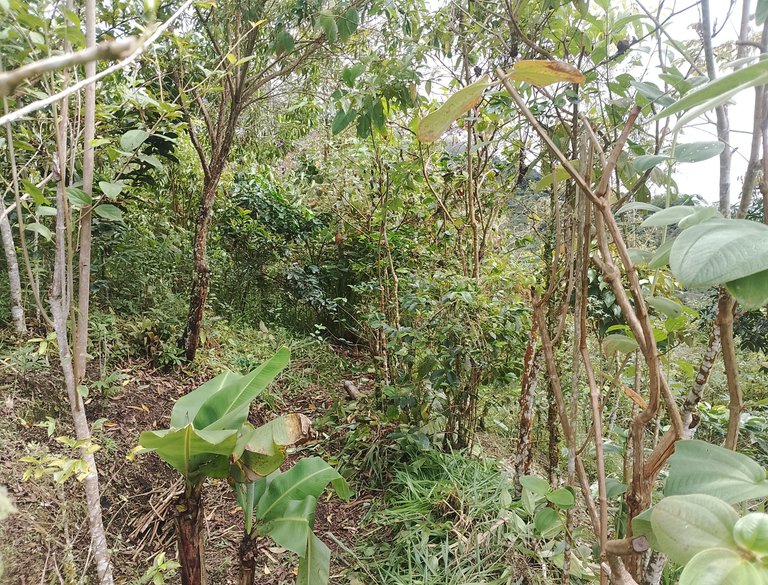Pictures from my gardening days
I have a lot to announce, and slowly I am getting through all the mental and written gymnastics that makes me feel like I am saying things in order. But during this time of transition, I have been hurrying to work as much as I can on my beloved "Tangara" lot, an experimental ex-coffee-monoculture on a hill.
Its one of the most advanced sections of the experimental Living Laborynth I told you about. And yes I realized that I cannot spell laberynth so I am chosing to go with laborynth, I believe in agriculture and I believe in labor so it just fits.

I say "on a hill", and maybe this needs unpacking because it was the "hilly" nature of our Andean region that first gave me pause against a "traditional" permaculture culture when I was coming up.
We live on a mountain, and the idea of "flat space" and "steep slopes" means something very different in the mind of people living and growing their agriculture in these regions. Swales are out, its too steep that they actually worsen erosion.
So we invented our own techniques.

So I took the hill, the one I call Tangara, and I divided it vertically by installing 7 on-contour biomass bunds. I support this biomass (from rolling down the hill) with bushes and trees, and these form a biological corridor of...well, bushes and trees.
The bund gives me the place to pile up all the biomass, organic matter, so it doesnt get in the way of all the "farming" I plan to do. Like growing bananas.

The spaces (vertically) in-between these 7 "contours" are "lots". Sure they could also have bushes and trees, but you can grow anything you want here. I number them going downward, since we live at the top of Tangara Hill. While Tangara 1 has played host to many a number of gardening experiments like potatoes, corn and yuca; Tangara 2 is so full of fruit trees that its hard to imagine anything else wanting sun growing well there.
But by making my way down to Tangara 4, I found a spot maybe to "start again" to get interested in growing some coffee. And harvesting the coffee that already grows.

I've been hard at work around here on the non-rainy portions of at least 6 days, and I am "almost" ready to think about making some videos on this topic. The challenge is, in the tropics the growth rate is fast, cameras do not do it justice, it can be hard to feel like I am "showing" what I am seeing, which of course is a dynamic and biodiverse polyculture of different species. Some more useful to me than others, but all contributing to a regenerating ecosystem of soil enrichment and sun and water capture.
This is the "future" of agriculture and ecological restoration (in my estimation) - a method designed to maximize for more than 1 variable - a profitable and environmentally friendly management system suited for our steep Andean slopes.
The best part that its always waiting for me to prune it, and I rarely get around to pruning it all at the same time. But for at least a few days more I will see how much progress can be made, before I abandon it again for a month or more.

Cyclical phases of abandonment and pruning have seemed to only stengthen these barriers, and now I am getting excited about our ever increasing wood crop, into 2026 and beyond.
But now, possibly, I can get Tangara 4 clean enough, looking promising enough, that just as I "abandon it", someone else will get motivated.
Coffee, thats another story altogether, and it has not escaped my attention that I never finished my "The Truth About Coffee" series back in the day. Maybe the day is coming when I will. Would that interest anyone? Let me know.
the goat video
yes, that guy........
how did he explain the slopes clearly enough to teach?
when I watched it you had said...... yes, I am already doing that
love you both
Love it!!! I hope you continue writing about it more often, so that I can join you in this experience.
!PIMP
😍
I love how you combine fruit tree planting with diverse crops to create a sustainable, multi-benefit ecosystem.
What a project so fascinating and full of dedication.
It is incredible how you have adapted agricultural techniques to the peculiarities of your mountainous region, creating such an innovative and sustainable system.
Tangara seems to be a real example of what can be achieved with creativity and respect for the environment.
!ALIVE
!HUG
I love seeing the land weaving that you're got going on in your part of the world. Systems like this are not only productive in terms of food and resources, but they are the perfect buffer between more wild nature, and human habitation. These are the types of systems that excite me to create. I'd love to hear The Truth about Coffee! 😁 🙏 💚 ✨ 🤙
Very good work that shows us other ways to boost soil fertilization.
It's important to prevent erosion and ecological damage that would affect crops. By gathering dead leaves and humus around those that require more attention, you can achieve higher yields.
The transition from coffee monoculture to diverse living systems is exactly what we need more of. Your laborynth concept is brilliant, agriculture IS labor and this work matters.